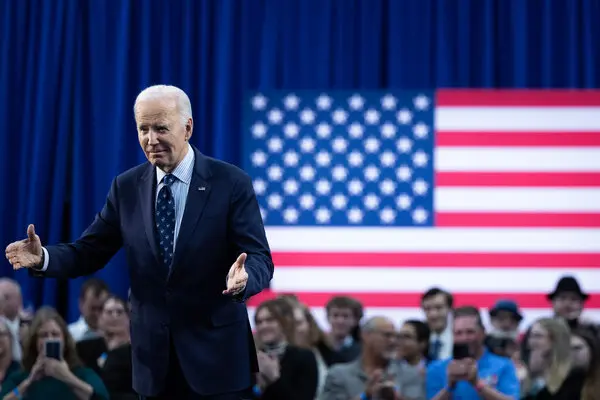In a significant legal development, two federal judges in Kansas and Missouri issued rulings on Monday that prevent the Biden administration from further implementing a new student debt relief plan aimed at reducing monthly payments for borrowers. The rulings came in response to lawsuits filed by several Republican-led states.

Judicial Blocks on Student Debt Relief
U.S. District Judge Daniel Crabtree in Wichita, Kansas, issued a ruling blocking the U.S. Department of Education from implementing parts of the student loan repayment plan that were not yet in effect. This plan is designed to cut borrowers’ monthly payments and provide a faster path to debt forgiveness. Shortly after, U.S. District Judge John Ross in St. Louis, Missouri, issued a preliminary injunction preventing the department from granting further loan forgiveness under the Biden administration’s Saving on a Valuable Education (SAVE) Plan.
The SAVE Plan offers more generous terms than previous income-based repayment plans. It lowers monthly payments for eligible borrowers and allows those with original principal balances of $12,000 or less to have their debt forgiven after ten years. Missouri Attorney General Andrew Bailey, a Republican, celebrated Ross’ decision, stating, “Congress never gave Biden the authority to saddle working Americans with half a trillion dollars in other people’s debt.”
Reactions from Both Sides
The White House expressed strong disagreement with the rulings and criticized Republican officials for opposing student debt forgiveness. White House Press Secretary Karine Jean-Pierre stated, “Today’s rulings won’t stop our administration from using every tool available to give students and borrowers the relief they need.”
President Joe Biden announced the SAVE Plan in 2022 as part of a broader $430 billion program intended to cancel up to $20,000 in debt for up to 43 million Americans. However, the U.S. Supreme Court, with its conservative majority, blocked this broader program in June 2023.
Despite the setbacks, parts of the SAVE Plan had already been implemented, with the Education Department reporting that by mid-May, 414,000 borrowers had received $5.5 billion in debt relief. The White House has indicated that over 20 million borrowers could benefit from the SAVE Plan, with 8 million already enrolled, including 4.6 million whose monthly payments have been reduced to $0.
Implications for Borrowers
The legal challenges against the SAVE Plan were led by eleven states in a lawsuit filed in Kansas. Judge Crabtree had previously dismissed eight of the states’ claims but allowed South Carolina, Texas, and Alaska to continue their challenge. Seven other states filed a similar lawsuit in Missouri.
Neither judge ordered any previously granted debt relief to be rescinded. Judge Crabtree noted that the Republican-led states had waited too long to claim they were being irreparably harmed by the aspects of the SAVE Plan already in effect. However, he argued that the Higher Education Act of 1965 did not authorize the “unprecedented and dramatic expansion” of income-based repayment plans envisioned by the Biden administration.

Judge Ross concurred with this assessment, stating that the Department of Education had “overstepped its authority by promulgating a loan forgiveness provision as part of the SAVE program.” He cited an estimate from lawyers representing South Carolina, Texas, and Alaska that the SAVE Plan would cost $475 billion over ten years. As the legal battles continue, the future of the SAVE Plan and its potential impact on millions of student loan borrowers remains uncertain. The Biden administration has vowed to explore all available options to provide relief to borrowers despite the recent judicial setbacks.
